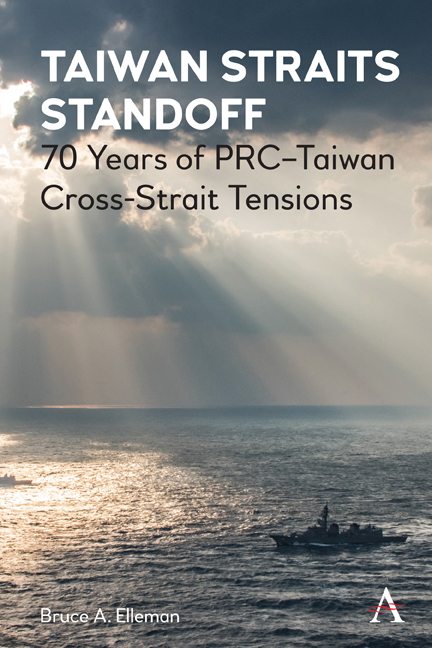Book contents
- Frontmatter
- Dedication
- Contents
- List of Illustrations
- Introduction: Stalemate along the Taiwan Straits, 1949–2020
- 1 The Two Chinas and the Battle for Control of Offshore Islands
- 2 President Harry S. Truman’s Decision to Protect Taiwan
- 3 The First Taiwan Strait Crisis, 1954–55
- 4 The Evacuation of the Dachen Islands, 1955
- 5 The Second Taiwan Strait Crisis, 1958
- 6 The US Threat to Use Atomic Weapons
- 7 Using Taiwan to Undermine the Sino-Soviet Alliance
- 8 Taiwan during the Cold War and Afterward
- Conclusions: The Taiwan Strait’s Strategic Significance Today
- Appendix: Naval Terms and Acronym List
- Selected Bibliography
- Index
7 - Using Taiwan to Undermine the Sino-Soviet Alliance
- Frontmatter
- Dedication
- Contents
- List of Illustrations
- Introduction: Stalemate along the Taiwan Straits, 1949–2020
- 1 The Two Chinas and the Battle for Control of Offshore Islands
- 2 President Harry S. Truman’s Decision to Protect Taiwan
- 3 The First Taiwan Strait Crisis, 1954–55
- 4 The Evacuation of the Dachen Islands, 1955
- 5 The Second Taiwan Strait Crisis, 1958
- 6 The US Threat to Use Atomic Weapons
- 7 Using Taiwan to Undermine the Sino-Soviet Alliance
- 8 Taiwan during the Cold War and Afterward
- Conclusions: The Taiwan Strait’s Strategic Significance Today
- Appendix: Naval Terms and Acronym List
- Selected Bibliography
- Index
Summary
Rather than resort to force in the Taiwan Strait, the US government hoped to defuse military tensions and to focus instead on longer term goals, like breaking up the Sino-Soviet alliance. As early as November 3, 1948, the CIA hypothesized that “when the issue of subservience to Moscow has become more immediate than that of ‘US imperialism’, Chinese nationalism will prove stronger than international Communism.” A National Intelligence Estimate from September 10, 1952, identified three specific issues that might at some point undermine this alliance: (1) “the Chinese Communists might make demands upon the USSR, or even take action, incompatible with longrange Soviet global interests”; (2) “frictions might arise because of Soviet inability or disinclination to supply capital equipment”; and (3) resistance to “a Communist world dominated from Moscow.”
China was portrayed as the weak link in the Sino-Soviet alliance, since the Russians had surrounded themselves with friendly governments in the Baltic and Eastern Europe, while “in the Far East there was a more direct confrontation between the Communist and non-Communist world.” This was exemplified in the PRC–ROC standoff over the offshore islands, and in the determination of both Chinese governments to reunify all of China under their authority. In December 1954, for example, Taiwan's Foreign Minister Yeh had vehemently opposed any promotion of a “two-China” theory. But during a February 10, 1955, conversation with Yeh, Dulles stated that he believed the solution to the communist threat would take time. Instead of trying to “force Chinese unification by military means” the United States and Taiwan should instead focus on “the vulnerability of Communist regimes to economic and other pressures.”
Rather than resorting to war, the US government hoped to use economic tools to undermine the Sino-Soviet alliance. As early as January 17, 1951, the NSC had pointed out that making China more economically dependent on Russia “might strain their relations.” On May 4, 1951, a revised version of this report recommended “continue United States economic restrictions against China” and “persuade other nations to adopt similar positions” so as to “stimulate differences between the Peiping and Moscow regimes.”
- Type
- Chapter
- Information
- Taiwan Straits Standoff70 Years of PRC–Taiwan Cross-Strait Tensions, pp. 121 - 134Publisher: Anthem PressFirst published in: 2021

